
Hong Kong’s Dried Seafood Street demystified: the smells, what sells, and the ways it keeps you well in Chinese tradition
Des Voeux Road West has been home to seafood vendors since the 19th century and is the place to go for dried abalone, sea cucumber and fish maw, as well as cordyceps fungus and other dried mushrooms
The most extravagant goods you can find in Hong Kong may not be in its upscale shopping malls, but on an old street where a sharp, salty smell pervades the air. Here, customers pay HK$1,000 for a kilogram of black fungus that looks like human hair, while a few yellow discs resembling plastic cost as much as HK$20,000.
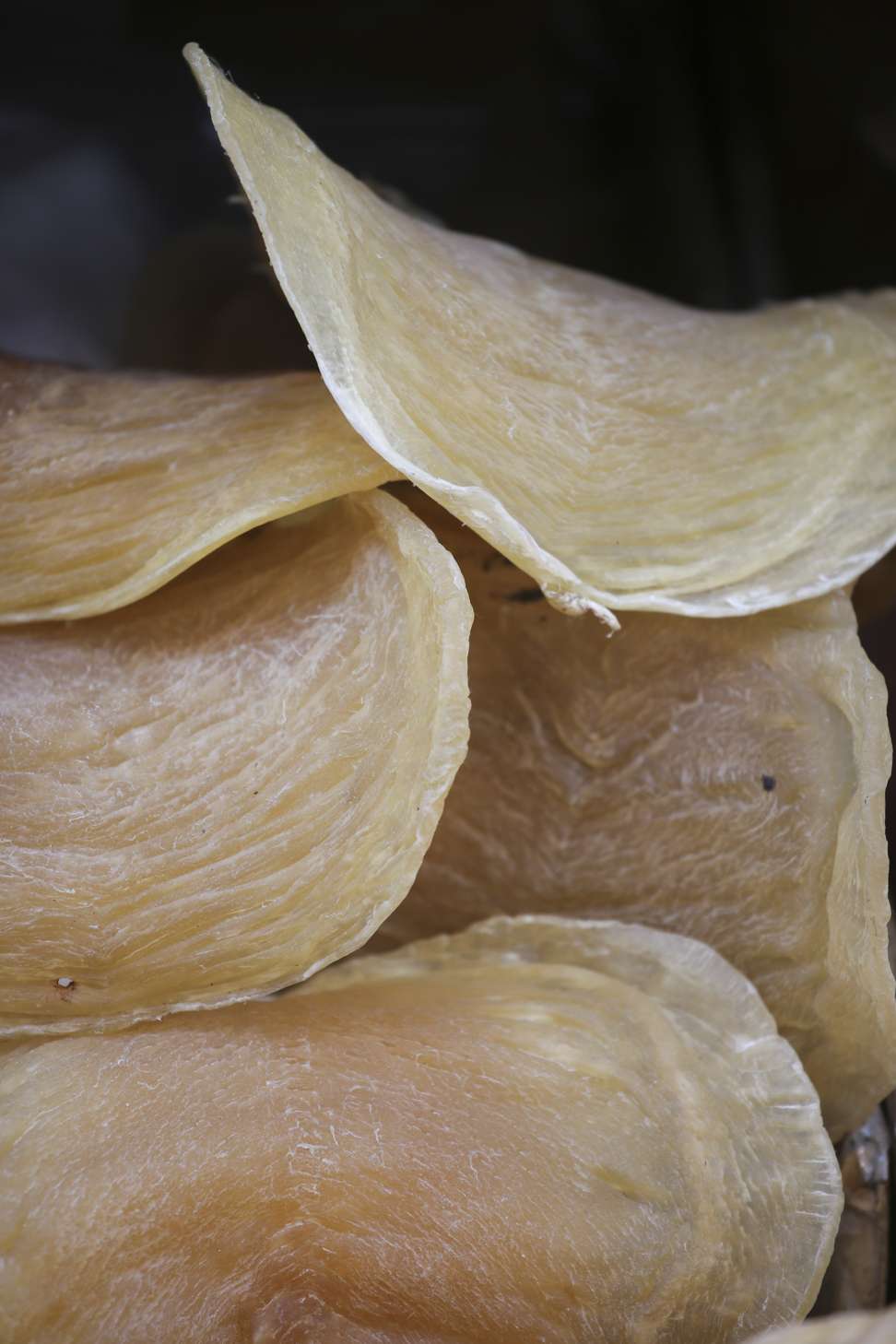
The shops also spill over onto neighbouring Wing Lok Street and Bonham Strand West in Sheung Wan.
From 8am to 5pm, locals come to bargain with vendors they have known since childhood; stiff paper boxes full of dried seafood are carried onto minivans; and curious tourists take photos of the strange fish, molluscs and other sea life, alongside sacks full of herbs, and snakes displayed in glass jars.
The hub of commerce in the northwest corner of Hong Kong Island started to emerge soon after the city was formally declared a British colony at nearby Possession Street in the mid-19th century. Chinese businessmen established a number of nam pak hong, or south-north trading houses, to conduct trade with the mainland and Southeastern Asian countries.
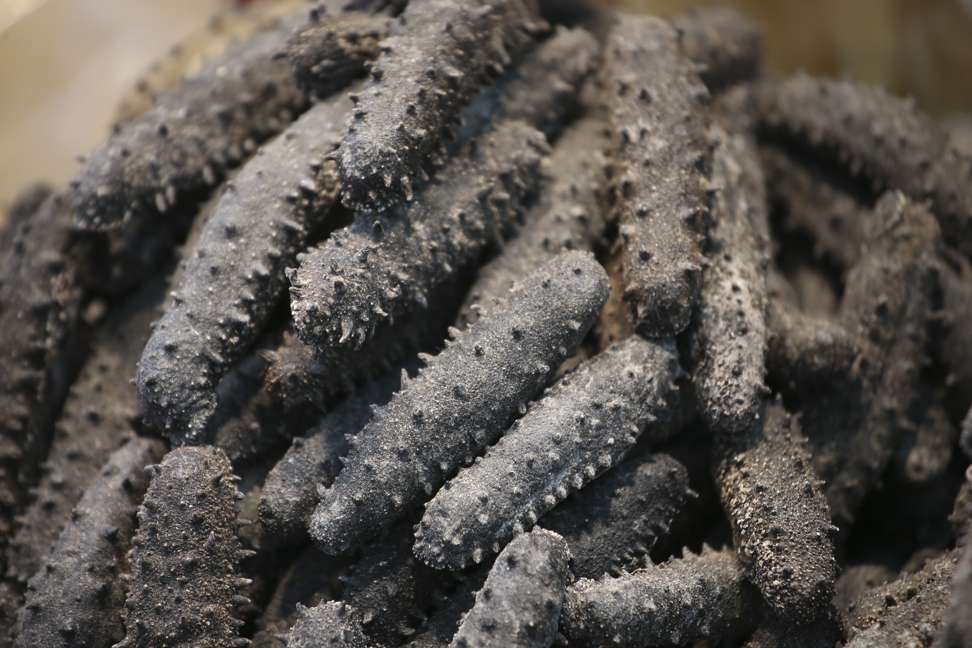
When having food, Asians look for qualities that are different from what the Westerners like
Cheung says that until around 50 years ago, Des Voeux Road West was known for workshops that produced salted fish from local catches – which were a cheaper, more popular choice for local families. They were gradually replaced by dried seafood retailers as rising incomes fuelled demand for more expensive ingredients.
Most of the shops also sell dried mushrooms, preserved meats and Chinese medicine products such as gingko seeds and yellow fungus, which are used to make soups.
On Dried Seafood Street today, vendors are proud that they bring in delicacies from all over the world for Hong Kong’s tables. Households and restaurants each contribute about half of the shops’ sales, vendors say.
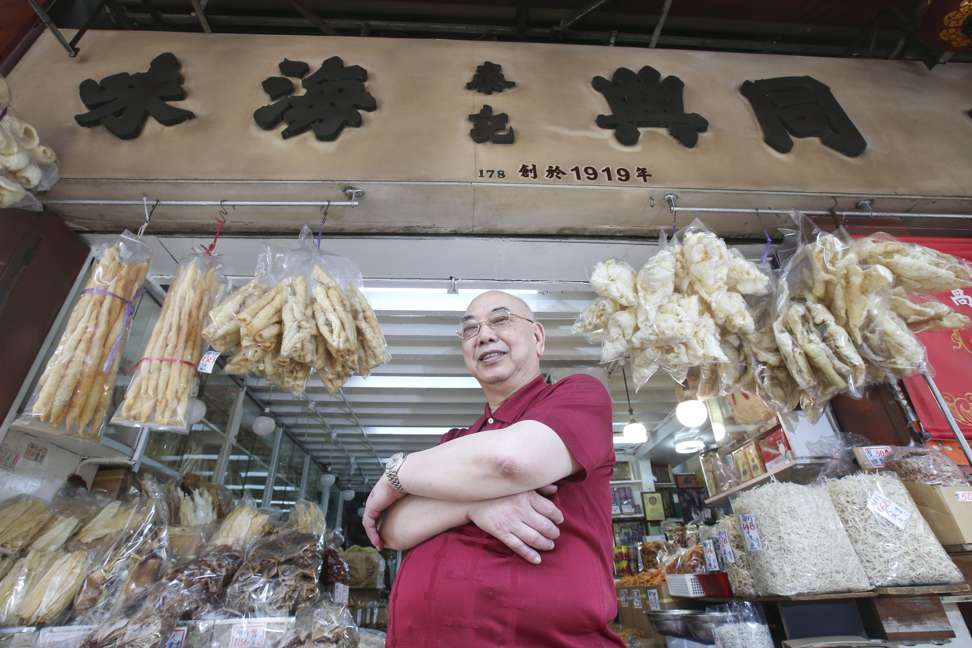
The shop is packed on a recent midweek afternoon as customers choose shrimp and sea cucumbers, feeling and sniffing them to test their quality before putting them in their shopping baskets.
Leung sits behind the counter in the middle of the store, directing his employees and sometimes shouting out answers to queries from visitors above the din.
On the shelf behind him, sitting on top of accounting ledgers filled with Chinese calligraphy, are three jars of caterpillar fungi – a traditional medicinal product that is the priciest item in the store – costing about HK$267,000 a kilogram. Also known as cordyceps, they are the fruiting bodies formed after the fungi parasitise ghost moth larvae, and are found in mountainous regions of Tibet and Nepal. Cordyceps are believed to strengthen immunity and restrain development of cancer cells.
The dried seafood items sold here are also beneficial to health, Leung says.
“Seafood makes you live longer and healthier,” he says, glancing around the shop. “All Cantonese people begin to appreciate that from childhood.”
Leung says that among all the goods he stocks, the “four treasures” – abalone, sea cucumbers, shark fin and fish maw – are traditionally believed to be the most delicious and nutritious.
“They have this unique, delicate sea flavour. It is a great pleasure eating them, but you cannot describe it in words.”
Passing tourists take photos with curious looks on their faces, mystified by the products on display.
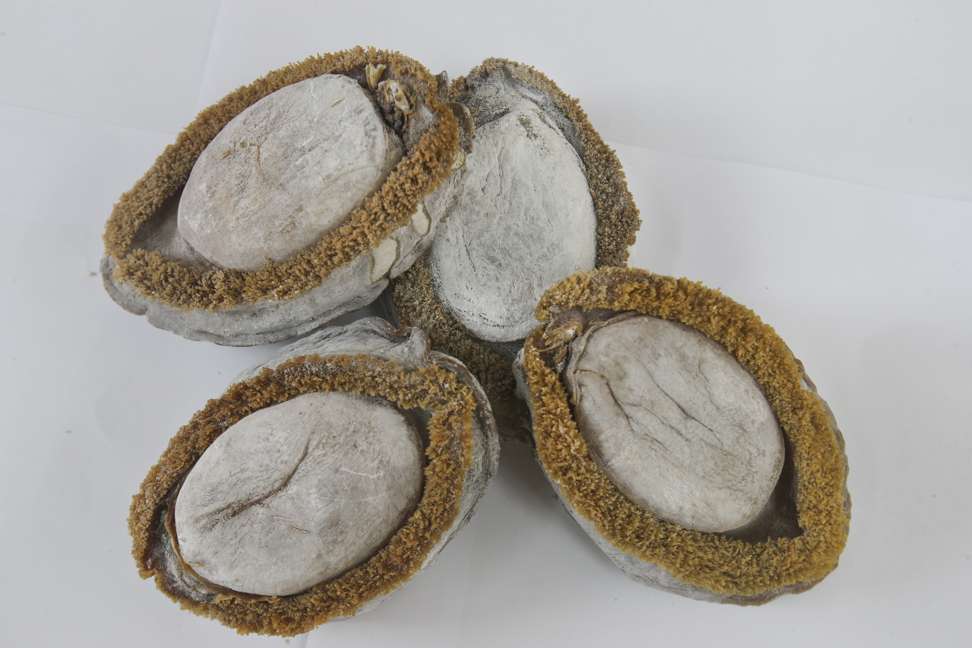
Sea cucumbers, thought to have anti-aging effects, should also be soaked and then boiled. The vendors offer a wide range of the species, imported from Japan, South America, Africa and Australia. Ones with the most spike-like papillae are regarded as being of higher quality. The most expensive sea cucumbers sell for about HK$12,000 a kilogram.
Probably the strangest-looking product, batches of yellow discs hanging from the ceiling, are in fact dried swim bladders, or maw. The larger maws in the stores come from fish that are several metres long.
Fish maws are often used to make soup, giving it a glutinous texture and a mildly sweet taste. Some restaurants also serve the large ones as a single dish, just like steak, to be eaten with a knife and fork.
Prices of dried fish maw range from several thousand Hong Kong dollars to more than HK$60,000 a kilogram, based on their size, thickness, origin and the scarcity of the fish.
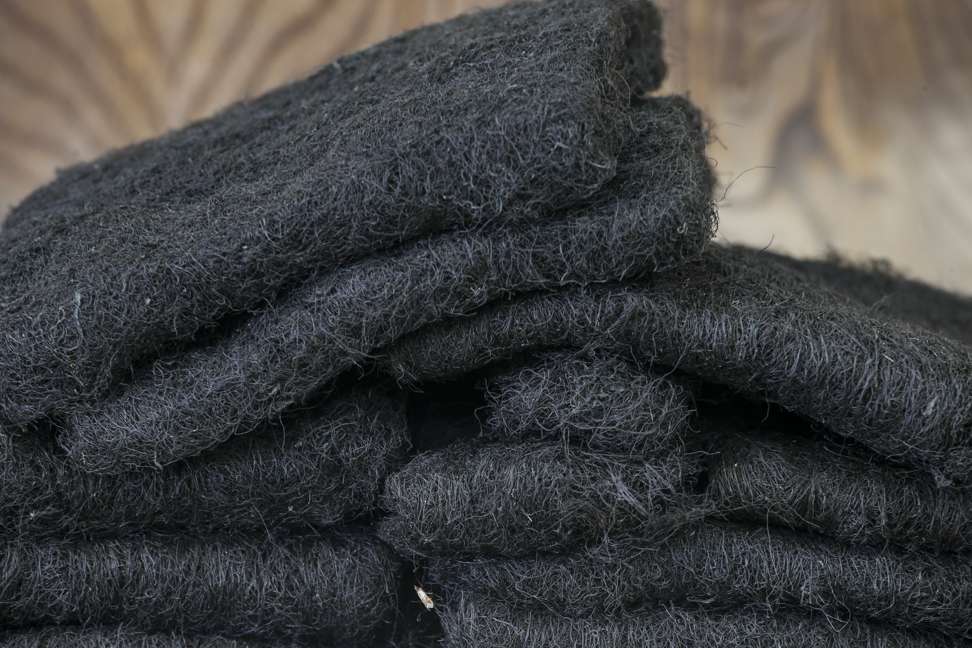
Harvesting of the desert fungus, found mostly in northern China, has triggered environmental concerns. In 2000, China banned the collection and export of black moss, saying its exploitation risked causing severe damage to the desert ecosystem.
Vendors say a small amount of the fungus is still available each year, and there is no ban on imports in Hong Kong. However, some of the fat choy on sale in the city is in fact imitations, made from starch, they say.
“When having food, Asians look for qualities that are different from what the Westerners like,” Cheung says. “For example ... sea cucumbers and fish maw are almost tasteless, but they add special textures to Chinese cuisines.”
The trade on Dried Seafood Street continues to flourish, as a younger generation joins the traditional business, bringing in new ideas and skills.

Mak, 57, now helps his 82-year-old father run Hoi Cheong Ho. Thanks to the younger manager, the old store now has a Facebook page and a website, where customers can place online orders.
One loyal customer, 65-year-old Pauline Lau, just paid nearly HK$20,000 for some fish maw, dried mushrooms and abalone.
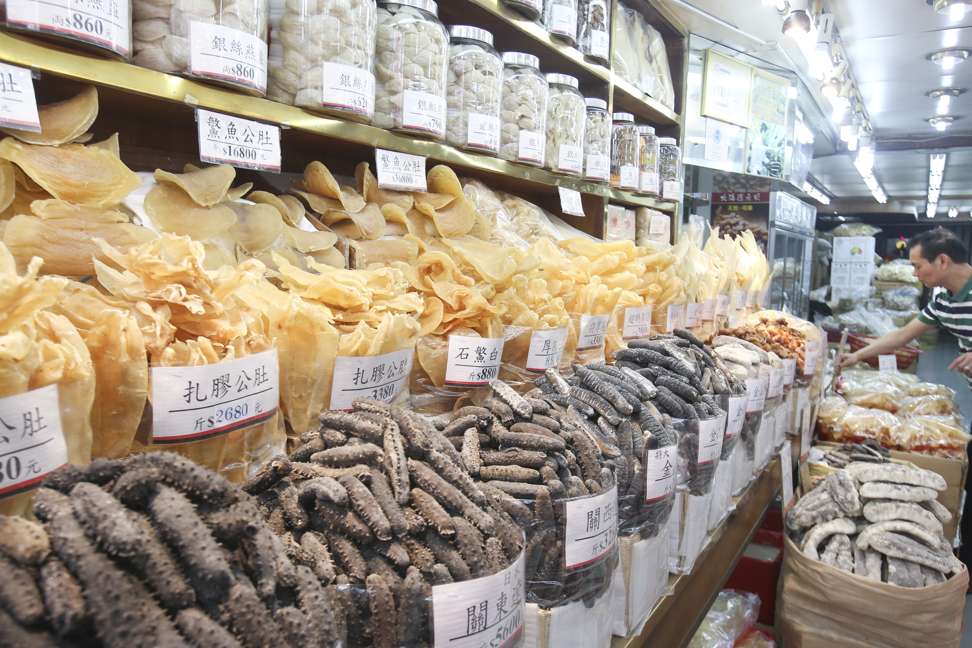
“Chinese people just love these things,” Lau says. “My children are all very good at making seafood soup.”
The love of flavours of the sea is being passed down to younger generations, but the industry still needs to adapt to changing tastes and cooking habits, according to Mak. He says young Hongkongers often find it too time-consuming to process dried ingredients, and some shops now offer more packaged and ready-to-cook products for millennial chefs.
Meanwhile, sales of shark fin are in sharp decline because of rising conservation concerns. Vendors say supplies have dropped since a number of sea and air carriers banned shark fin cargos, although traders can still find ways to get them in.
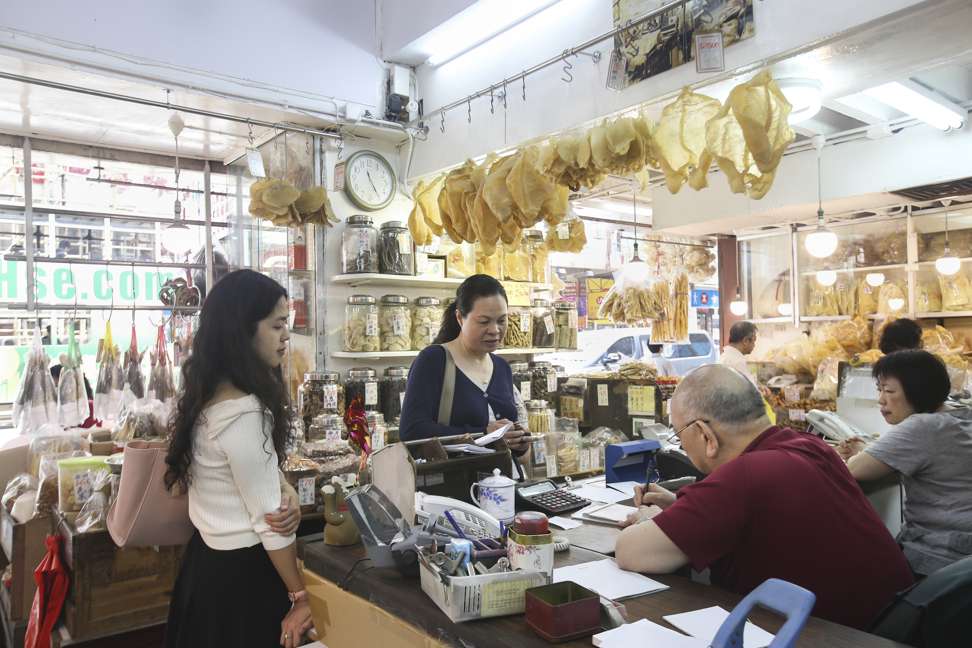
“I am going to do this until the day I die,” he says. “The seafood industry will not disappear. People always need to eat. This is our tradition.”

